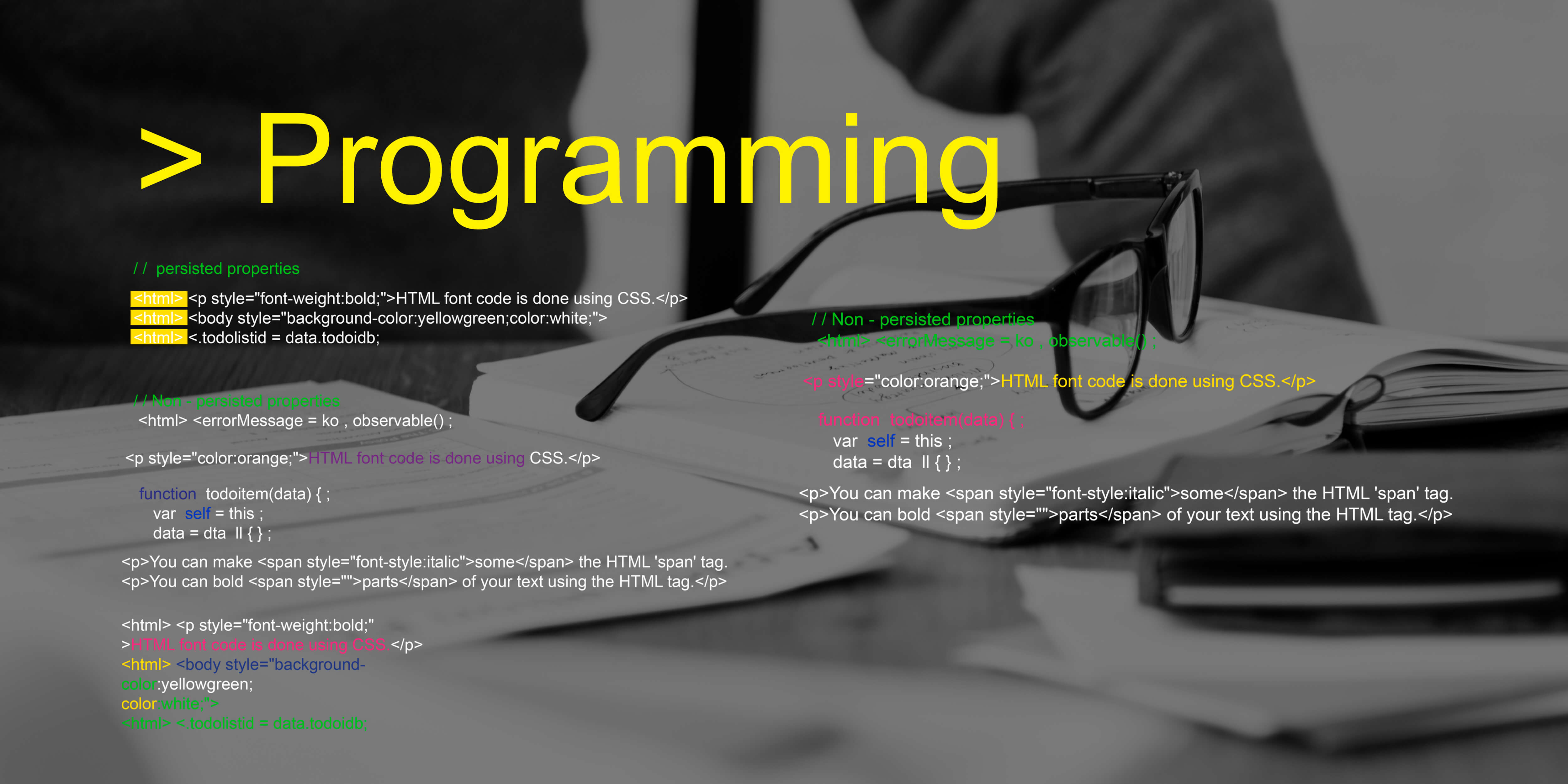Is It Easy to Learn HTML, CSS, and JavaScript? 2023 Guide
Nov 29, 2023 7990 seen
Introduction
In the dynamic realm of web development, proficiency in HTML, CSS, and JavaScript forms the bedrock for creating stunning and interactive websites. Whether you're a beginner embarking on your coding journey or an experienced developer looking to expand your skill set, mastering these three languages is essential. In this comprehensive guide, we will explore effective strategies and resources to help you learn HTML, CSS, and JavaScript, empowering you to craft compelling web experiences.
Evolution of CSS and JavaScript in 2023:
In the ever-evolving landscape of web development, staying abreast of the latest trends and advancements is paramount. As of 2023, both CSS and JavaScript continue to play pivotal roles, with notable developments shaping their usage.
CSS in 2023:
CSS has undergone significant advancements, particularly in the realm of layout and design. The advent of CSS Grid and Flexbox has revolutionized the way developers approach responsive design, offering powerful tools for creating complex layouts with ease. Custom properties (CSS variables) have gained popularity, allowing for more dynamic and maintainable styling.
Moreover, the emphasis on CSS-in-JS solutions has grown, enabling developers to encapsulate styles within JavaScript components, promoting modularity and maintainability. With the ongoing focus on performance and user experience, optimizing CSS for faster loading times and smoother animations remains a priority in contemporary web development.
JavaScript in 2023:
JavaScript, as the backbone of interactivity on the web, has witnessed advancements in both language features and ecosystem tools. ECMAScript updates have introduced new syntax and capabilities, enhancing the language's expressiveness and readability. Modern frameworks and libraries such as React, Vue.js, and Angular continue to shape the landscape, offering efficient ways to build dynamic user interfaces.
WebAssembly (Wasm) has gained traction, allowing developers to run high-performance code written in languages like C and C++ directly in the browser. This has implications for tasks requiring intensive computation, further expanding the possibilities of web applications. Progressive Web Apps (PWAs) and serverless architectures are also trends to watch, underscoring the importance of creating seamless, responsive, and fast web experiences.
Understanding Programming Basics
Before delving into the intricacies of web development, let's talk about the fundamentals of each language.
HTML (Hypertext Markup Language)
HTML serves as the backbone of web content, providing the structure and organization. Start by learning about tags, elements, and attributes. Familiarize yourself with the basic document structure and how to create headings, paragraphs, lists, and links.
CSS (Cascading Style Sheets)
CSS is responsible for the presentation and styling of HTML elements. Begin by understanding selectors, properties, and values. Explore how to apply styles to text, images, and layout elements. Dive into concepts such as positioning, margins, and padding to gain control over the visual aspects of your web page.
JavaScript
JavaScript adds interactivity and dynamic functionality to web pages. Begin with the basics of variables, data types, and operators. Progress to control structures like loops and conditional statements. Understand how to manipulate the Document Object Model (DOM) to dynamically update and modify content.
How to Learn HTML, CSS, and JavaScript
The adage "practice makes perfect" holds true in the realm of coding. Apply your theoretical knowledge by engaging in hands-on projects. Create a simple webpage incorporating HTML and CSS to solidify your understanding of their syntax and structure. Experiment with JavaScript to build interactive elements such as form validation, image sliders, and dynamic content updates.
Consider developing a personal portfolio website to showcase your projects. This not only serves as a practical application of your skills but also provides a tangible representation of your progress as a developer.
Online Courses and Tutorials
Numerous online platforms offer structured courses and tutorials for learning web development. Websites like Codecademy, Udacity, and freeCodeCamp provide interactive lessons, allowing you to code in a real-time environment. These platforms cover a range of topics from basic syntax to advanced concepts, offering a well-rounded learning experience.
Additionally, YouTube hosts a wealth of tutorials from experienced developers. Channels such as Traversy Media, The Net Ninja, and Academind provide step-by-step guidance on HTML, CSS, and JavaScript concepts. Leverage these resources to reinforce your understanding and gain insights from industry experts.
Join Coding Communities
Participate in coding communities to connect with fellow learners and experienced developers. Platforms like Stack Overflow, GitHub, and Reddit host vibrant communities where you can seek help, share your knowledge, and collaborate on projects.
Attending local meetups, webinars, or conferences can also provide valuable networking opportunities and insights into industry trends. Engaging with a community fosters a supportive learning environment and exposes you to diverse perspectives in the field.
Build Responsive and Interactive Projects
As you progress in your learning journey, challenge yourself by building more complex projects. Create responsive web designs that adapt to different screen sizes using media queries in CSS. Implement JavaScript frameworks like React or Vue.js to enhance the interactivity and efficiency of your applications.
Consider contributing to open-source projects on GitHub. Collaborating with other developers on real-world projects not only enhances your coding skills but also exposes you to industry best practices and collaborative development workflows.
Conclusion
In summary, CSS and JavaScript have evolved to meet the demands of contemporary web development in 2023. Embracing these advancements will not only enhance your development skills but also position you to create modern, performant, and user-friendly web applications. As you embark on your learning journey, consider exploring these recent developments to stay at the forefront of the dynamic world of web development.


